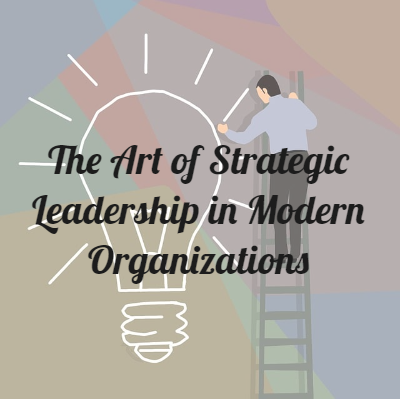In the ever-evolving landscape of business, achieving consistent success is a complex challenge. However, what if organizations possessed a roadmap to guide them through the intricacies of strategic leadership, enabling them to navigate toward high-level success? This article delves into the critical components of strategic leadership, exploring behaviors that drive success within companies. Drawing from various perspectives and backed by relevant statistics, we uncover the essence of strategic leadership and its impact on organizational prosperity.
The Foundation of Strategic Leadership
Strategic leadership is not merely about creating a vision or setting long-term goals; it involves a comprehensive approach that aligns the organization’s internal dynamics with its external environment.
According to the insights shared on the TTISI Blog, bottom-up thinking is a crucial aspect of strategic leadership. It emphasizes the importance of involving employees at all levels in the strategy-making process, fostering alignment and commitment.
Leadership as a Key Driver
Effective leadership is the linchpin of strategic success. A good leader emphasizes the pivotal role of leadership in strategic initiatives. Leaders who embrace strategic thinking contribute to the development of robust business strategies and guide their teams toward successful execution. By fostering a culture that values strategic planning and embraces change, leaders lay the groundwork for sustained success.
Understanding Team Dynamics
Strategic leadership is not a solo endeavor; it thrives on collaborative efforts. The TTISI Blog sheds light on the importance of effective communication skills. Leaders who understand and leverage diverse communication styles within their teams can enhance collaboration and problem-solving, essential components of strategic success.
Assessments and Talent Management
Strategic leadership involves assessing both individual and collective strengths and weaknesses. Utilizing assessments is a valuable practice in talent management, aiding in the identification of key skills and areas for improvement. According to Verus Partners, a strategic approach to talent management ensures that the right people are in the right roles, enhancing overall organizational effectiveness.
Cultivating a Positive Workplace Culture
Workplace culture plays a pivotal role in the success of any organization. A positive and inclusive culture fosters employee engagement, innovation, and resilience in the face of challenges. Strategic leaders recognize the significance of cultivating a healthy workplace culture that aligns with the organization’s values and goals.
Conclusion
In the dynamic realm of business, strategic leadership emerges as a guiding force, steering organizations toward sustained success. By incorporating bottom-up thinking, embracing strategic leadership principles, understanding team dynamics, utilizing assessments, and fostering a positive workplace culture, leaders can create a roadmap to navigate the complexities of today’s business environment.
Sources:
1. TTISI Blog – Bottom-Up Thinking Through Messy Strategy: Creating Alignment Within Organizations
2. Leaders.com – Strategic Leadership
We would love to hear your comments. Please contact us today!
Gary Brunson
gary@myclearfocus.com
Debra Rider
debra@myclearfocus.com
574.361.2674
Sustainable Growth & Profit Consultant, Coach, Mentor, and Counselor/Therapist for Business Owners and Professionals.


